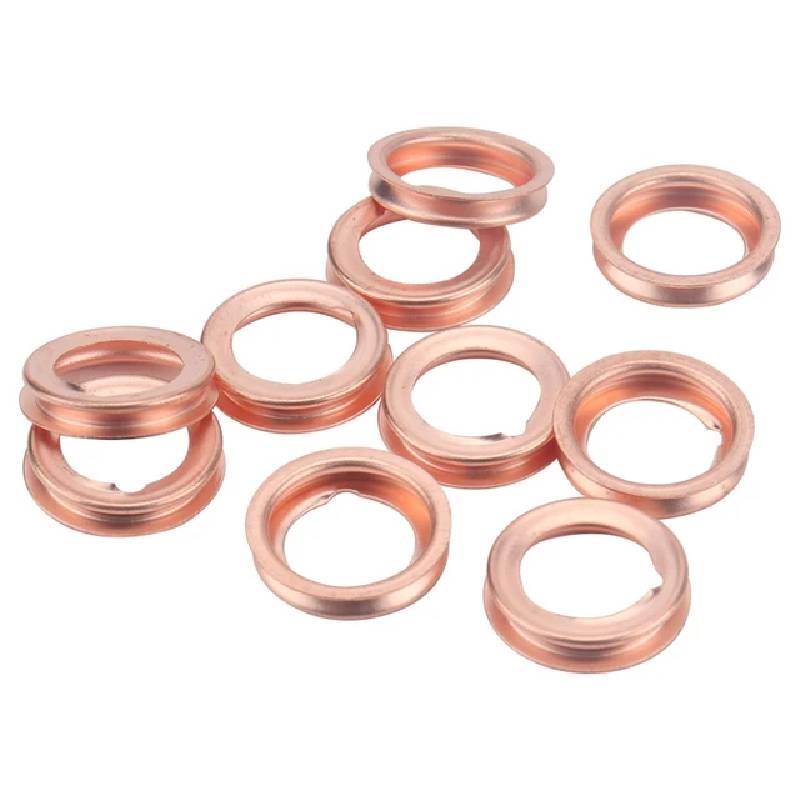Choosing the Right Gasket for Your Oil Tank Maintenance and Performance
Understanding Oil Tank Gaskets Importance, Types, and Maintenance
Oil tanks play a crucial role in various industries by storing fuels and lubricants vital for operations in manufacturing, transportation, and more. One of the essential components that ensure the efficiency and safety of these tanks is the gasket. Oil tank gaskets serve as a sealing element between the tank and its fittings, preventing leaks and maintaining the integrity of the stored substances. This article discusses the significance of oil tank gaskets, the various types available, and tips for their maintenance.
The Importance of Oil Tank Gaskets
Oil tank gaskets are vital for several reasons
1. Leak Prevention The primary function of a gasket is to create a tight seal between the oil tank and any connection points, such as the fill pipe or outlet. A well-fitted gasket prevents leaks, which can lead to environmental hazards, safety issues, and financial losses.
2. Pressure Maintenance In some oil storage applications, maintaining specific pressure levels is vital. Gaskets help ensure that pressure remains constant by preventing the escape of vapors or fluids, ultimately supporting optimal tank functioning.
3. Chemical Resistance Oil and petroleum products can be corrosive. Gaskets are designed with materials that can withstand these chemicals, prolonging the life of both the gasket and the tank itself.
4. Safety Compliance Many industries are subject to strict regulations regarding environmental protection and safety. Utilizing high-quality gaskets that prevent leaks contributes to compliance with these regulations, helping companies avoid legal penalties.
Types of Oil Tank Gaskets
There are various types of oil tank gaskets, each engineered for specific applications and environments. Some commonly used gaskets include
1. Rubber Gaskets Made from various types of rubber, these gaskets offer good flexibility and sealing capability. However, they may not withstand high temperatures or aggressive chemicals as effectively as other materials.
2. Fiberglass Gaskets Fiberglass gaskets provide excellent strength and thermal resistance, making them suitable for high-pressure applications. They are also resistant to many corrosive substances.
3. Metal Gaskets Commonly used in high-pressure and high-temperature applications, metal gaskets, such as spiral wound gaskets, offer durability and resilience. They can handle severe conditions and are often used in industrial-level oil tanks.
oil tank gasket

4. PTFE Gaskets Polytetrafluoroethylene (PTFE) gaskets are highly resistant to chemicals and can withstand a wide temperature range. They are often used in applications where oil must be stored under extreme conditions.
5. Cork Gaskets Cork gaskets are known for their compressibility and excellent sealing capabilities. They are often used in low-pressure applications and are biodegradable, making them an environmentally friendly option.
6. Composite Gaskets These gaskets combine two or more materials to provide enhanced sealing properties and resistance to specific chemicals or conditions.
Maintenance of Oil Tank Gaskets
Proper maintenance of oil tank gaskets is crucial for ensuring their longevity and effectiveness. Here are some practical tips for maintaining gaskets
1. Regular Inspections Conduct regular inspections of the gaskets to check for signs of wear or damage, such as cracks, deformation, or discoloration. Early detection can prevent larger issues, such as leaks or complete gasket failure.
2. Clean the Surface Ensure that the surfaces where gaskets are installed are clean and free from debris. Any contaminants can impair the gasket’s sealing performance.
3. Replace When Necessary Gaskets have a finite lifespan. If excessive wear is noticed, or if leaks occur, it's crucial to replace the gasket immediately to maintain the tank's integrity.
4. Use the Right Material Selecting the appropriate gasket material for your specific application is important. Factors such as temperature, pressure, and the type of oil being stored should dictate your choice of gasket material.
5. Follow Installation Guidelines Proper installation is key to the effectiveness of a gasket. Follow manufacturer instructions regarding compression and installation techniques to avoid mishaps.
Conclusion
In conclusion, oil tank gaskets are essential components that ensure the safe and efficient storage of oil and petroleum products. By understanding the importance of these gaskets, recognizing the different types available, and implementing proper maintenance practices, industries can improve safety, comply with regulations, and protect the environment. Regular attention to gaskets will not only prolong their lifespan but also contribute to the overall efficiency of oil storage systems.
-
Simplifying Oil Changes: A Comprehensive Guide to Oil Drain Plugs and Their Variants
News Aug.04,2025
-
Mastering Oil Drain Maintenance: Solutions for Stripped, Worn, and Upgraded Oil Plugs
News Aug.04,2025
-
Fixing Oil Pan Plug Issues: Leaks, Stripped Nuts, and the Right Replacement Solutions
News Aug.04,2025
-
Everything You Need to Know About Oil Drain Plugs: Sizes, Fixes, and Upgrades
News Aug.04,2025
-
Choosing the Right Oil Drain Plug: A Guide to Sizes, Materials, and Drain Innovations
News Aug.04,2025
-
A Complete Guide to Automotive Drain Plugs: Types, Problems, and Innovative Solutions
News Aug.04,2025
-
The Ultimate Guide to Car Repair Kits: Tools and Essentials Every Driver Should Own
News Aug.01,2025
Products categories















